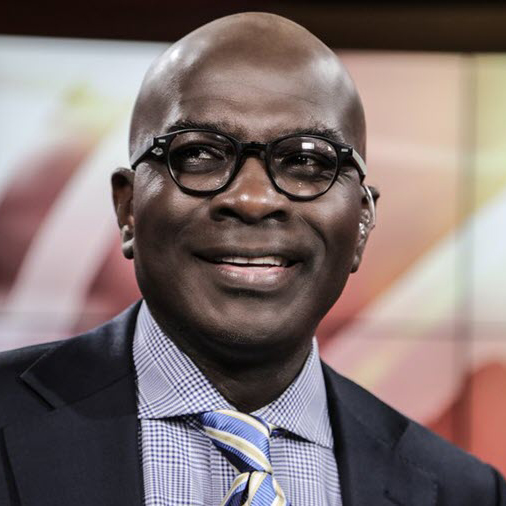Stopping Newspapers From Going the Way of the Dinosaurs (B+C Guest Blog)
Allowing broadcast cross-ownership could give flagging news orgs a boost

I love freedom of the press. I applaud speaking truth to power. Fueled by these commitments, I am eager to discover solutions for the rightly venerated newspaper industry.
Since the dawn of the digital age, newspapers have been going the way of the dinosaurs. But the march towards extinction can be slowed, if not halted, with newspaper-television common ownership in the same market that augments reporting resources and journalistic talent to advance the public’s right to know.

A good example is The Washington Post after it swapped WTOP Washington for a Detroit station in 1978, based on ownership limitations.
Numbers do not lie.
The Post lost a stunning 500,000 subscribers from 2020 to 2023. It lost $77 million last year and is struggling to keep its head above water despite owner Jeff Bezos’ wealth. Advertising dollars have migrated to online platforms featuring more targeted and profitable advertising options.
The Washington Post is not an outlier. Newspaper advertising revenue plunged from 2002 to 2020 a staggering 52%, from $46.2 billion to $22.1 billion, according to the U.S. Census Bureau’s Service Annual Survey, as newspaper readers fled to digital sources for news. In 2023, internet advertising revenues rocketed to $225 billion, a 7.3% annual increase, per the Interactive Advertising Bureau. Social media alone accounted for $64.9 billion in ad revenue, an annual jump of 8.7%.
Further, social media and other digital platforms enjoy an enormous artificial advantage over newspapers or broadcasters. Under Section 230 of the Communications Decency Act, the former is shielded from liability for defamatory content posted by users. The latter is not. A newspaper or television station or network is legally exposed to actionable defamation for republishing statements made by third parties. Fox News paid Dominion Voting Systems $787 million for publishing false statements that its electronic voting machines counted votes for former President Donald Trump as votes for President Joe Biden in 2020.
Broadcasting & Cable Newsletter
The smarter way to stay on top of broadcasting and cable industry. Sign up below
Additionally, platforms like Google and AI profit by raiding content created by newspapers, broadcasters, or other content creators to make money. Current copyright protection for the creators is dubious or uncertain. The New York Times has filed a lawsuit against OpenAI and Microsoft. The complaint alleges the companies without permission used Times articles to train their AI models to generate outputs directly derived from copyrighted material. Congress could easily amend the Copyright Act to expressly extend protection against raiding copyrighted material of newspapers or broadcasters by Google, Microsoft or others, but the latter deter legislators with PAC money.
Relevant content is created by local TV and surviving newspapers, only for our content to be stolen and used to make more money than TV and newspaper outlets.
Several other countries have recognized the unfairness and distortion of the marketplace that ensues by withholding copyright protection from content creators. The European Union passed the Digital Services Act and Digital Markets Act, requiring large online platforms to pay new publishers for using snippets of their content. The compensation is typically negotiated between platforms and publishers to fix a fair price.
Australia was a pioneer with the News Media Bargaining Code in 2021. It mandates negotiations between digital platforms and news media companies to pay for news content. If an impasse is reached, an arbitration process fixes the compensation. Canada’s Online News Act of 2023 is similar. It also requires negotiations between platforms and content creators to fairly compensate the latter for boosting the profits of the former. The Act aims to prevent the extinction of Canadian journalism.
At the dawn of broadcasting, the public benefits of common ownership of newspapers and stations were acknowledged by the Federal Communications Commission. It encouraged newspapers to invest in radio and television to boost these technologies and expand media availability. Newspapers were endowed with the financial resources and journalistic talent needed to operate radio and television stations, which accelerated the latter’s growth and audience reach.
The Gannett newspaper chain was a prime example. The Washington Post Co. acquired WTOP in 1950. Its TV news operation flourished alongside its newspaper.
In the digital age, it is fatuous to worry that common television and newspaper ownership in the same market compromises viewpoint or news diversity. The internet has ushered in virtual limitless competitive platforms. Moreover, as renowned First Amendment scholar Alexander Meiklejohn taught, “what is essential is not that everyone shall speak, but that everything worth saying shall be said.”
Newspapers and broadcasters vet their content for quality. Internet platforms often do not, which is why it overflows with blather and imbecilities.
I am not suggesting that newspapers or broadcasters should be shielded from creative destruction ushered in by digital innovations and free market forces. But competition from the latter strengthened by unfair legal advantages has made encouragement of common ownership of newspapers and broadcast stations instrumental to preventing newspapers from becoming museum pieces like Tyrannosaurus Rex.
I am dedicated to moving heaven and earth to see that such a free press tragedy does not happen.
Armstrong Williams is a principal owner of the Baltimore Sun and manager/sole owner of Howard Stirk Holdings I & II Broadcast Television Stations.
